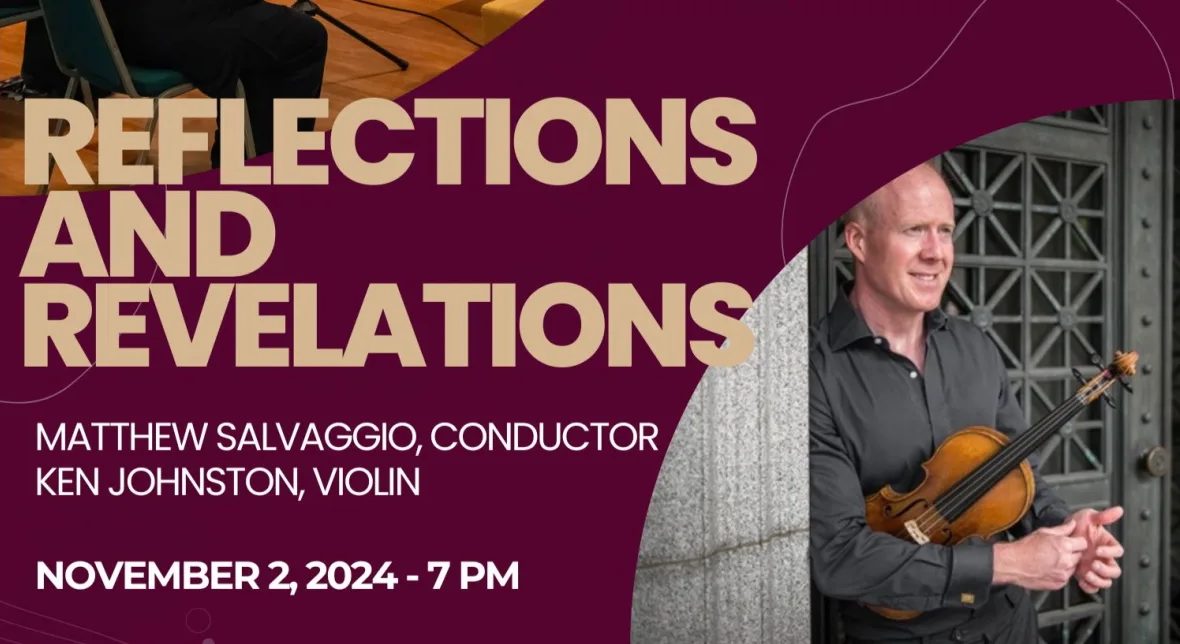by Stephanie Manning

The Cultural Arts Center at Disciples Christian Church hosted the season-opening concert, titled “Reflection and Revelations.” The venue’s dry acoustic helped the textures remain clear in Clyne’s piece, a somber and meditative seven minutes. Conductor Matthew Salvaggio led the musicians through its mysterious textures — the piece’s arc somehow brought to mind the image of Alice falling down the rabbit hole, into a land of the unfamiliar.
Charles Auguste de Bériot’s Scène de Ballet, however, was more familiar territory. Even if you haven’t heard it before, the lyrical, Romantic musical style and solo violin make it easy to follow. In the tutti sections, the Orchestra brought a sense of joie de vivre, complementing the piece’s enthusiasm.
Violinist Ken Johnston followed the group closely, and his high register never strained. He controlled his spiccato bow technique nicely, as he did with the elegant glissandos synchronized with the flute.
Johnston then joined the violin section after intermission for the Orchestra’s big work of the evening: Howard Hanson’s Symphony No. 3. The piece commemorates the 300th anniversary of the first Swedish settlement in Delaware, and Salvaggio read Hanson’s program notes describing how he depicted its Swedish influence. “To be honest, I don’t hear a ton of that,” he said lightheartedly.
I didn’t either. All four movements have similar tempos and textures, and the music within doesn’t inspire many strong feelings. Still, Salvaggio’s love for the material was evident and his direction clear. The musicians helped the third movement stand out with its bouncier nature and distinct thematic material. The second movement featured some refined horn solos, and the fourth some proud brass chorales.
The strongest piece of the concert actually came at the beginning, not the end: Katahj Copley’s grand, cinematic Equinox. A driving engine of sixteenth notes propelled the musicians through the seven minutes, accentuated by playful marimba and waterfalls of notes from the harp. The effect of perpetual motion resembled the wheel of time, slowly but steadily spinning.
Copley primarily composes for wind band, as Salvaggio explained, with this being one of his few works for orchestra. Its sentiments lined up neatly with the Anna Clyne piece that followed: amid the endless cycles of life and death, it’s okay to not know where your journey is going.
Published on ClevelandClassical.com November 14, 2024.
Click here for a printable copy of this article



